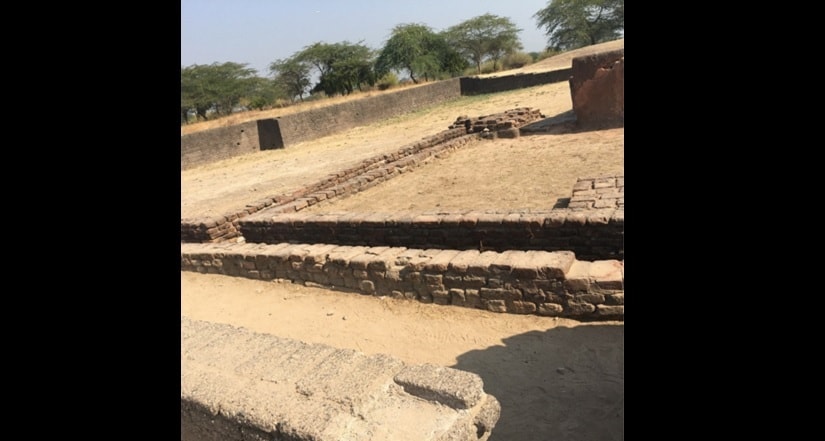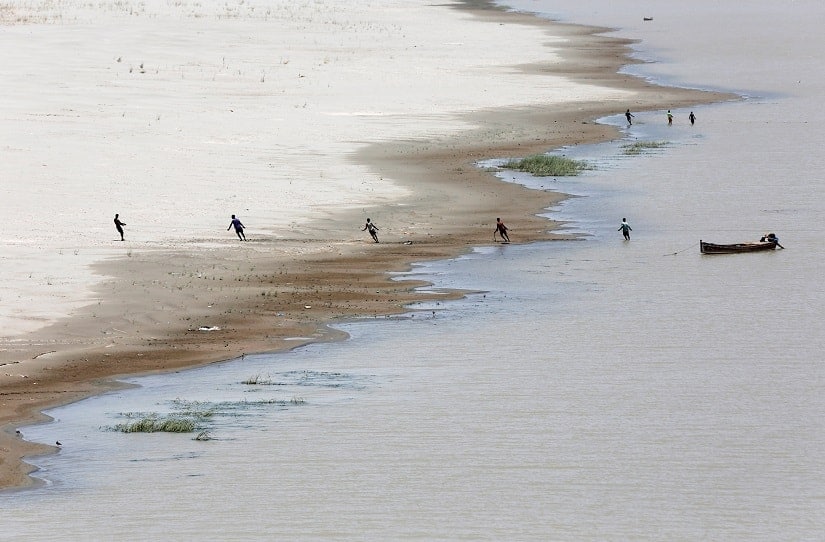On 14 February this year — a day when popular culture has sweethearts reaching for each other — 40 members of the Central Reserve Police Force of India lost their lives in a suicide bomber attack in Pulwama. Subsequently, the Jaish-e-Mohammed (the army of Mohammed), a Pakistan-based terrorist group, claimed responsibility for the attack. In the days that followed, one suggestion for retaliation has been to “ cut off ” the waters of the Indus to downstream Pakistan, because, in the words of India’s Prime Minister, “ blood and water cannot flow together ”. Can we ‘turn off’ the tap though? After all, the Indus (and her tributaries) are mighty rivers — the annual flow of the Indus is estimated to be upwards of 200 cubic kilometres. That’s going to need one hell of a tap (it has been done, as we will see later). So, the question becomes, if we can, how? And even if we can, should we? To answer these questions, we will need to first examine history, explore the present and visit the future, to unravel the skeins that make the up the narrative of the Indus river system. This involves appreciating the irony that characterises the Indus River basin: that amongst the earliest records of the geography of the modern-day Islamic Pakistan is the Rig Veda, the most sacred text of the Hindus, who form the majority of Pakistan’s inimical neighbour, India. The Rig Veda describes the Indus, or the Sindhu as: “The Rivers have come forward triply, seven and seven. Sindhu in might surpasses all the streams that flow.” “Most active of the active, Sindhu unrestrained, like to a dappled mare, beautiful, fair to see.” The Atharva Veda, not to be outdone, adds: “Ye rivers all, whose mistress is Sindhu, whose queen is Sindhu.” The Vedic people called the Indus Valley the Sapta Sindhu. But when the Persians invaded the region circa 500 BCE, they called the land “Hapta Hindu” (the “s” in Sanskrit is morphs to “h” in Persian), which gives birth to the words “Hindus” and “Hindustan”. But we get ahead of our story. Some 2,000 years before the Persian invasion (and many believe several millennia before that), a flourishing civilisation existed in the Indus Valley, named by modern historians — quite originally — as the Indus Valley Civilisation (IVC). We have no idea what the inhabitants of this civilisation called the Indus because we are yet to decipher their script. But we do know they were masters of water management from the eloquent non-verbal language of the tanks and drains they left behind. [caption id=“attachment_6375161” align=“alignnone” width=“825”]  Figure 1: Drain, Lothal, Indus Valley Civilisation[/caption] At its peak, the Indus Valley Civilisation spanned a thousand individual cities/sites. Like other civilisations of its time, the periodic flooding of the river, and the dispersal of the silt was crucial to growing crops in the IVC. To allow their cities to thrive, they were often built on an elevation, with sophisticated engineering to carry water to and sewage away from every house. [caption id=“attachment_6375171” align=“alignnone” width=“825”]  Figure 2: Artist’s representation of Lothal, Indus Valley Civilisation[/caption] The river was central to their civilisation – providing drinking water, carrying away sewage, and importantly serving as transport to enable trade. Cotton textiles are thought to have originated here, with cotton textile fragments dating to 2750-3250 BCE found at Mohenjo-daro. The goods of the IVC reached distant shores: the Mesopotamians called the IVC ‘Meluhha’, and were customers for many of their wares. Clearly, they were a sophisticated, egalitarian civilisation who appreciated the value of managing water all too well. Why did such a sophisticated civilisation disappear?
While there are several theories of why the IVC declined, one key factor appears to have been climate change. Around 4,800 years ago, the Indian Monsoon began to weaken, causing agriculture to suffer. The Meluhhans responded by changing the crops they grew to the drought resistant millet, but while that action appears to have postponed the decline, it did not stop it.
Yama Dixit of Cambridge University, and her team, studied the sediments of a small lake in one of the Harappan sites. The lake they studied, Kotla Dahar, was a closed system, filled only by rain and groundwater; the only way for water to leave was to evaporate. This meant they could directly link the water composition of the lake with the rainfall patterns and temperature of the region. To study rainfall patterns historically, they first dated the different sediment layers of the lake through radiocarbon dating. Then they analysed the snail shells found in the lake for relative concentration of two forms (isotopes) of oxygen — the heavier Oxygen-18 and the lighter Oxygen-16. The snail’s shells are formed from the water of the lake, meaning their shells will reflect the composition of the lake water. In times of drought, more water would evaporate, meaning the lake water — and by extension, the snail shells — would have a higher fraction of the heavier Oxygen-18. This meant the ratio of the two oxygen isotopes in the snail shells found in any particular sediment layer was now an indicator for the intensity of drought in that region in that time period. The team’s data showed that around 4,100 years ago, there was a spike in the relative amount of Oxygen-18 suggesting that rainfall decreased radically during that time. Of course, there are uncertainties of +/- 100 years in the exact timing of these events, but the trends themselves are reliable especially given that they correlate with other finding pointing to an overall drying around India and the world. [caption id=“attachment_6375331” align=“alignnone” width=“825”]  Fishermen pull a fishing net as they catch fish along the Indus River, Hyderabad, Pakistan. REUTERS[/caption] There was another finding that was more frightening: around this time, the snails disappeared from the sediment, suggesting that the lake had become seasonal, rather than permanent. Their study suggested that regular summer monsoons may have weakened considerably for some 200 years. Two hundred years — that’s dramatic. It shows us the kind of events that may occur when climate changes. We sit here today, so arrogantly confident about our climate, that it does not even figure in how we judge our own performance or the performance of our leaders. We forget that there were times, just a geological blink ago, where the Indian Monsoon weakened for two centuries. Think of what might happen to our powerful world if the Indian summer monsoon were to weaken for 200 years. More than half of India’s farms are rainfed – what would the farmers do, if the monsoon weakened, not just in devastating back-to-back droughts, but for decades at a stretch? Our story does not end here. Over the ensuing centuries, invaders have passed through the Valley, bringing change to the subcontinent. Alexander’s visit, in particular, while he did not cross into the subcontinent, and he did not stay, acted as a pole star for subsequent invaders. It is one particular “invader” I would like to focus on for next time. One that changed the Indus Valley decisively and laid much of the groundwork for the hydrological fractures of today. Read part 2 of this column. The writer is the founder of the Sundaram Climate Institute, cleantech angel investor and author of The Climate Solution — India’s Climate Crisis and What We Can Do About It published by Hachette. Follow her work on her website; on Twitter; or write to her at cc@climaction.net.


)

)
)
)
)
)
)
)
)



